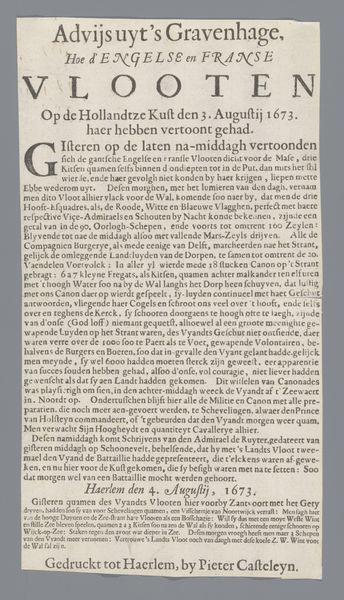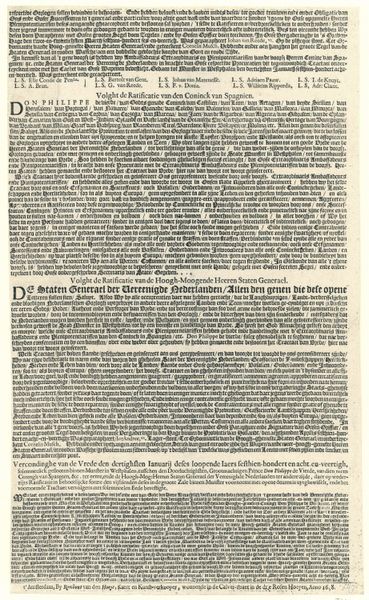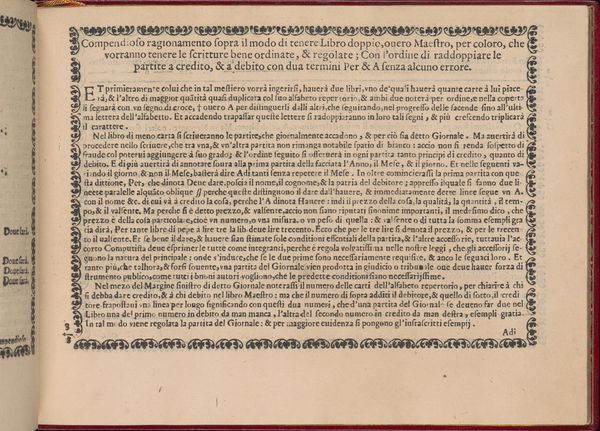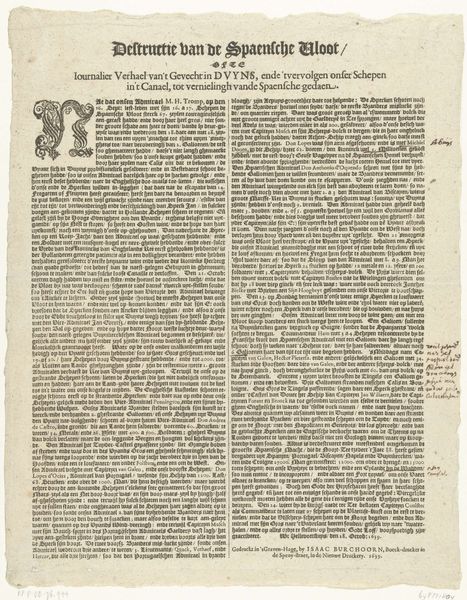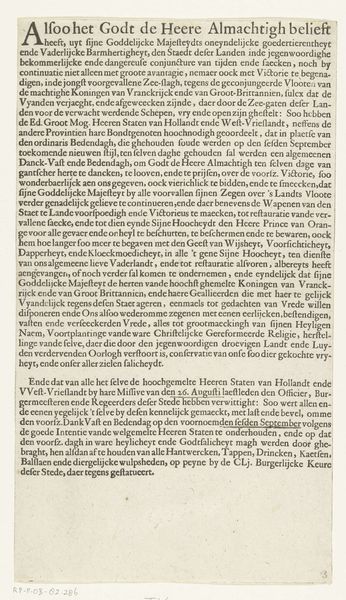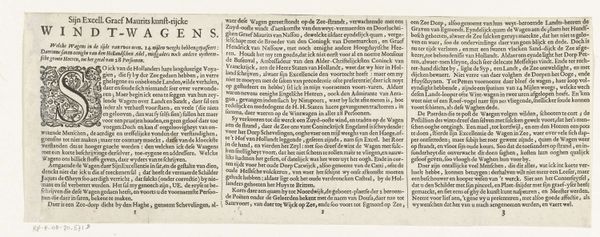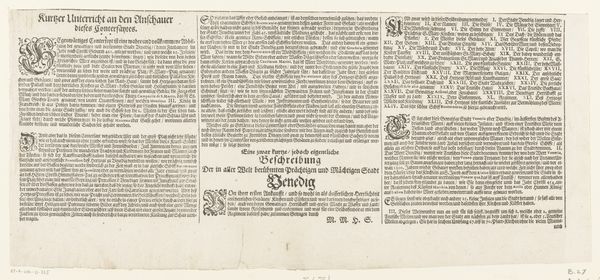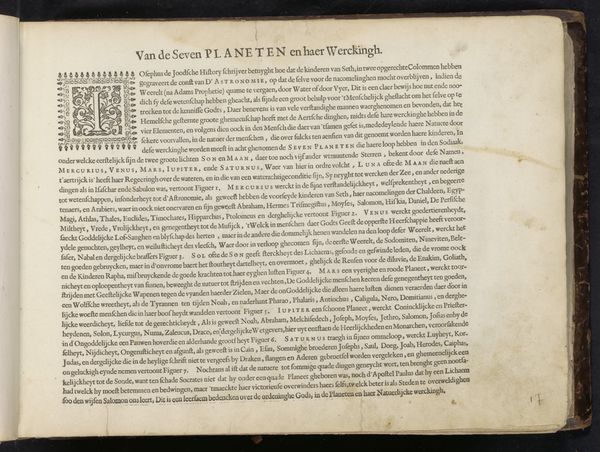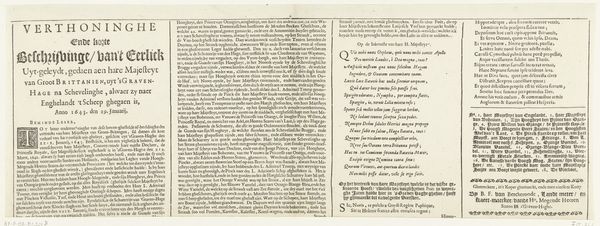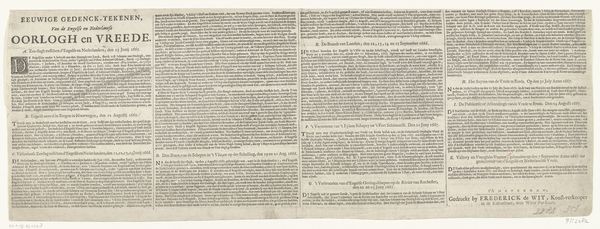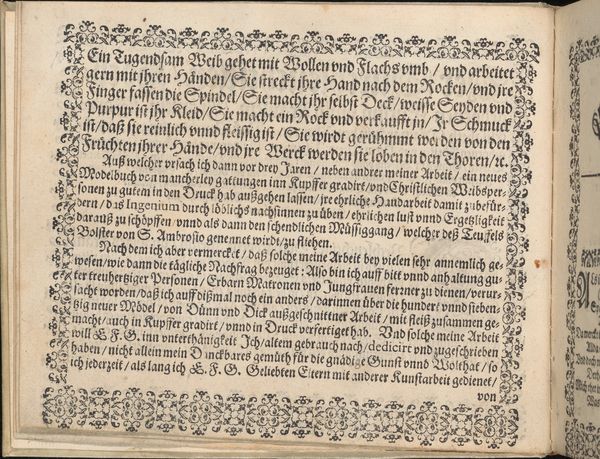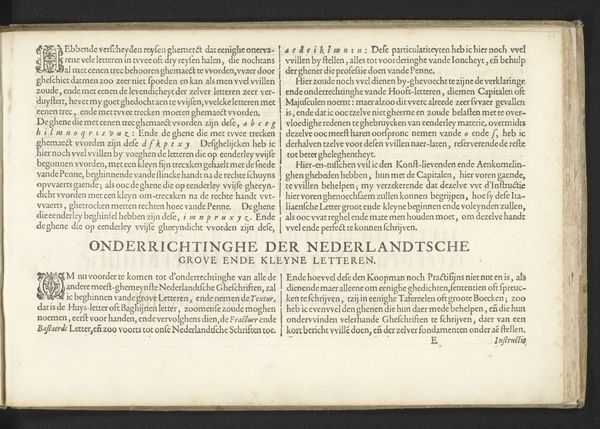
Missive van den Heer Admirael de Ruyter van 17 juni 1673 Possibly 1673 - 1676
0:00
0:00
graphic-art, print, textile, paper, typography
#
graphic-art
#
dutch-golden-age
# print
#
textile
#
paper
#
typography
Dimensions: height 30 cm, width 18 cm
Copyright: Rijks Museum: Open Domain
Curator: Here we have "Missive van den Heer Admirael de Ruyter van 17 juni 1673," a printed letter by the famous Dutch admiral, Michiel de Ruyter. This particular example, housed in the Rijksmuseum, was likely printed sometime between 1673 and 1676. Editor: My first thought is how immediate it feels. It's a message straight from the front lines. A stark reminder that even centuries ago, people sought instant communication during moments of crisis. The sheer volume of text gives me a feeling of urgency, of wanting to know everything. Curator: Precisely! It's a fascinating artifact of information dissemination in the 17th century. These printed missives were crucial in shaping public opinion and bolstering support for the Dutch war effort against the English and French. The typography itself is a declaration. Editor: Definitely. And to think of the paper it’s printed on… textiles were once also made with the same fiber, but only certain stories are deemed worthy enough to become preserved through this format. Curator: Contextually, this letter describes naval battles in the early stages of the Third Anglo-Dutch War. De Ruyter’s leadership was instrumental in several key Dutch victories, which made him a national hero. These prints served to amplify that image and cement his place in the public's imagination. Editor: It also raises questions about access and control. Who got to read this "missive"? Was it truly intended for the 'people,' or was it strategically released to influence particular social strata? What biases did the printer hold when selecting which typeface to use? Curator: It’s a carefully crafted piece of propaganda as well as a factual dispatch. The language is designed to inspire confidence, even while acknowledging the difficulties and losses. And of course, printers had their own political leanings, influencing distribution and emphasis. Editor: Thinking about contemporary parallels, it makes me wonder what form this missive would take today: a tweet, a news alert? And how would we dissect its rhetoric, its hidden agendas? Curator: It really highlights the constant negotiation between information, power, and public perception that has shaped socio-political movements throughout history. Thank you for highlighting that it's less about the war itself and more about what this physical copy represented. Editor: A worthwhile reflection on then and now, and I hope listeners find the print and its meaning just as remarkable.
Comments
No comments
Be the first to comment and join the conversation on the ultimate creative platform.
